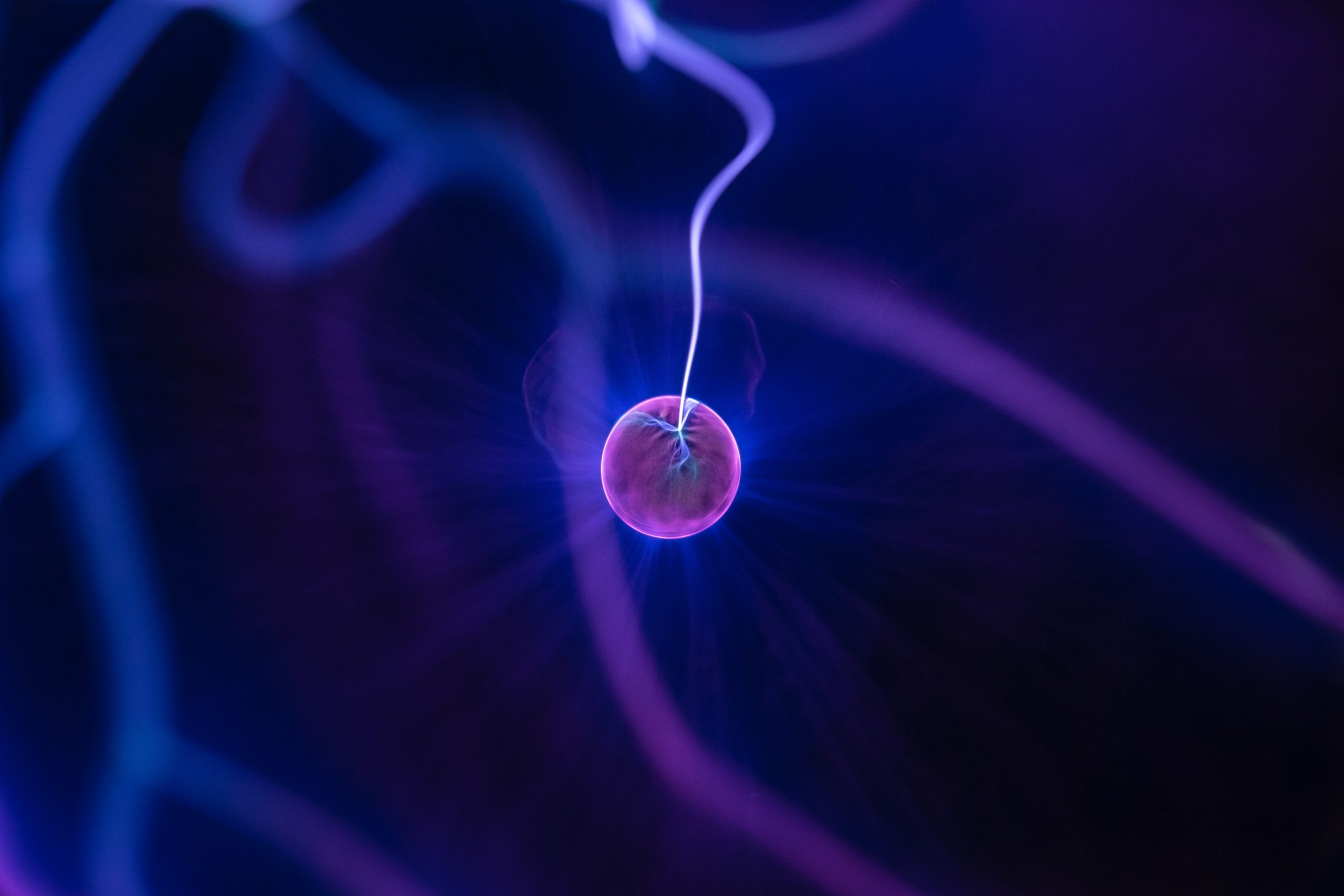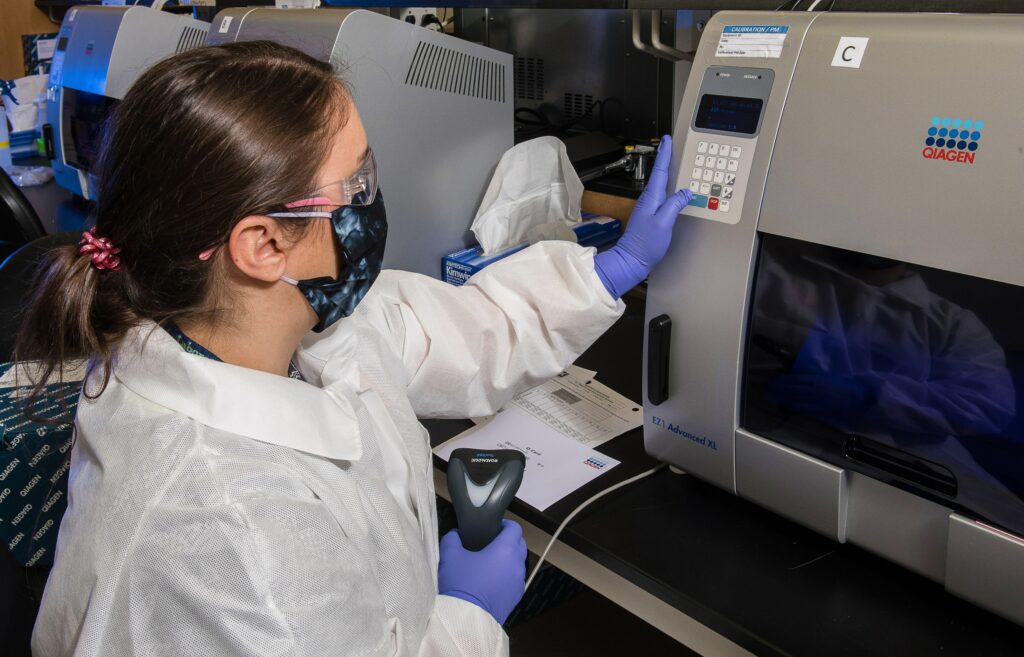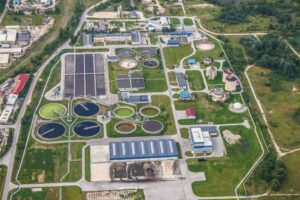06/24/2024 | Conductivity | 7 MINUTE READ
A Safety Guide to Chemical Processing with Conductivity Sensors

The chemical processing industry is a cornerstone of modern manufacturing, essential for producing various products, from pharmaceuticals to industrial chemicals. Central to its operation are chemical processing plants, complex facilities where raw materials transform into valuable end products through precise chemical reactions and processes.
Ensuring the efficiency, safety, and quality of these processes is paramount. One critical tool in achieving these goals is the conductivity sensor, a sophisticated device designed to monitor the electrical conductivity of liquids. These sensors provide crucial insights into water purity, chemical concentrations, and overall process conditions by measuring conductivity.
This article delves into the world of chemical processing plants and the pivotal role that conductivity sensors play within them. We will explore how these sensors enhance operational control, optimize resource utilization, and contribute to maintaining stringent safety standards. By understanding the applications and benefits of conductivity sensors, we uncover their significant role in driving efficiency and reliability in chemical processing operations, inspiring the potential of these devices in your work.

Understanding Chemical Processing Plants
Chemical processing plants are complex facilities that transform raw materials into valuable chemical products through chemical reactions and processes. These plants are integral to various industries, including pharmaceuticals, petrochemicals, food, and beverage, where precision and reliability are paramount.
Chemical processing plants have specialized equipment and infrastructure tailored to handle chemical reactions safely and efficiently. They are equipped with reactors, distillation columns, heat exchangers, and storage tanks, among other components, each playing a critical role in different processing cycle stages.
Chemical processing plants are significant because they can convert raw materials—often sourced from natural resources or other chemical processes—into products that meet specific industrial or consumer demands. This transformation process involves meticulous control over temperature, pressure, chemical composition, and other variables to ensure consistent product quality and safety.
Essential Components and Equipment
- Reactors: Reactors are essential for initiating chemical reactions under controlled conditions.
- Distillation Columns: Distillation columns separate the components of mixtures based on differences in boiling points.
- Heat Exchangers: Facilitate heat transfer between process streams to maintain optimal temperatures.
- Storage Tanks: Storage tanks safely store raw materials, intermediates, and final products until further processing or distribution.
- Control Systems: Incorporate instrumentation and automation to monitor and regulate process parameters, ensuring operational efficiency and safety.
Understanding chemical processing plants’ infrastructure and operational dynamics provides a foundational understanding of their role in industrial manufacturing.
Importance of Monitoring in Chemical Processing
In chemical processing plants, real-time monitoring is indispensable for maintaining operational efficiency, ensuring product quality, and safeguarding personnel and environmental safety. The dynamic and often hazardous nature of chemical reactions necessitates continuous oversight of various process parameters.

Why Real-Time Monitoring is Crucial
- Process Optimization: Real-time monitoring allows operators to adjust process parameters promptly based on current conditions, optimizing reaction rates, yield, and energy efficiency.
- Quality Assurance: Continuous monitoring ensures that product specifications are met consistently, detecting deviations early to prevent costly batch failures or product recalls.
- Safety and Compliance: Monitoring critical parameters such as temperature, pressure, and chemical concentrations helps prevent accidents and ensure compliance with stringent safety regulations and environmental standards.
- Resource Efficiency: Monitoring enables efficient use of raw materials and utilities by identifying process improvements and waste reduction opportunities.
Challenges in Maintaining Optimal Conditions
- Complexity of Processes: Chemical reactions can be sensitive to slight variations in conditions, requiring precise monitoring to achieve desired outcomes.
- Safety Concerns: Hazardous materials and reactions pose risks to personnel and the environment, necessitating vigilant monitoring to mitigate potential hazards.
- Scale and Scope: Large-scale chemical processing plants operate multiple reactors and units simultaneously, increasing the complexity of monitoring and control.
Addressing these challenges relies on advanced monitoring technologies that provide accurate and timely data. Conductivity sensors stand out among these technologies for their ability to monitor the purity of water and solutions, detect contamination, and ensure proper chemical concentrations. In the following section, we explore how conductivity sensors enhance monitoring capabilities in chemical processing plants, driving efficiency and safety in operations.
Applications of Conductivity Sensors in Chemical Processing
Conductivity sensors are pivotal in enhancing operational control and ensuring product quality in chemical processing plants. These sensors measure the electrical conductivity of liquids, providing valuable insights into various aspects of the processing cycle. Here, we explore the diverse applications of conductivity sensors and their benefits in optimizing chemical processing operations.
Monitoring Water Purity
One of the primary applications of conductivity sensors in chemical processing is monitoring water purity. Water quality is critical across numerous stages of chemical production, from ingredient preparation to cooling and cleaning processes. Conductivity sensors detect changes in water conductivity, indicating variations in dissolved solids and purity levels. This capability helps maintain water quality standards and prevents contamination affecting product integrity.
Detecting and Preventing Contamination
Conductivity sensors are instrumental in detecting contamination in process fluids. By continuously monitoring conductivity levels, these sensors can quickly identify deviations caused by unwanted substances or impurities entering the system. Early detection allows operators to take corrective actions promptly, minimizing the risk of product quality issues and ensuring compliance with regulatory requirements.
Ensuring Proper Chemical Concentration
Maintaining precise chemical concentrations in chemical processing is crucial for achieving desired reaction rates and product consistency. Conductivity sensors enable real-time monitoring of chemical solutions, verifying their conductivity against predefined standards. This capability ensures that chemicals are dosed accurately, optimizing process efficiency and minimizing material waste.
Process Optimization and Control
Integrating conductivity sensors into process control systems enables automated adjustments based on real-time data. Operators can fine-tune process parameters such as flow rates, concentrations, and pH levels to optimize efficiency and maximize yield by continuously monitoring conductivity levels. This proactive approach enhances overall process control, reduces operational costs, and supports sustainable manufacturing practices.
Environmental Monitoring
Beyond process efficiency, conductivity sensors contribute to environmental stewardship by monitoring wastewater discharge and ensuring compliance with environmental regulations. By measuring conductivity levels in effluent streams, these sensors help prevent unauthorized releases of contaminants into the environment, safeguarding water resources and supporting corporate sustainability goals.

Integration with Industrial Automation Systems
Conductivity sensors are integral to modern industrial automation systems in chemical processing plants. These sensors provide real-time data on water purity and chemical concentrations and play a crucial role in optimizing process control and efficiency. Here, we explore how conductivity sensors integrate seamlessly with industrial automation systems, enhancing operational capabilities and enabling proactive decision-making.
Interface with PLCs and Control Software:
Conductivity sensors interface directly with Programmable Logic Controllers (PLCs) and other control systems, forming a critical link between sensing and actuation within the plant. PLCs receive sensor conductivity readings and execute programmed logic to adjust process parameters accordingly. This integration enables automated responses to deviations in conductivity levels, such as activating valves to adjust chemical dosing or triggering alarms for immediate operator attention.
Real-Time Data Integration:
Connectivity sensors transmit real-time data to control software platforms, enabling comprehensive monitoring and analysis of process conditions. Supervisory Control and Data Acquisition (SCADA) and Distributed Control Systems (DCS) utilize conductivity data alongside other sensor inputs to provide a holistic view of plant operations. This data integration facilitates predictive maintenance, process optimization, and regulatory compliance, empowering operators with actionable insights to enhance productivity and reduce downtime.
Benefits of Integration:
- Enhanced Process Control: Automation enabled by conductivity sensors improves the precision and responsiveness of process control, minimizing variability and ensuring consistent product quality.
- Operational Efficiency: Automated adjustments based on real-time conductivity data optimize resource utilization, reducing waste and energy consumption.
- Safety and Compliance: Integrated systems enable rapid detection of anomalies and deviations from set parameters, enhancing safety protocols and regulatory compliance.
Conclusion
Conductivity sensors represent a cornerstone of modern chemical processing, vital in optimizing efficiency, ensuring product quality, and maintaining safety standards within manufacturing plants. Throughout this article, we have explored the multifaceted applications of conductivity sensors—from monitoring water purity and detecting contamination to facilitating precise chemical dosing and supporting environmental compliance.
In conclusion, conductivity sensors exemplify the synergy between technology and industrial processes, offering tangible benefits regarding efficiency, safety, and environmental stewardship. As chemical processing continues to evolve, conductivity sensors will remain indispensable tools for achieving operational excellence and meeting the stringent standards of a dynamic global industry.
Posted by Joshua Samp on June 24, 2024
Sensorex is a global leader in the design and manufacture of quality sensors for water quality and process applications. The company offers more than 2000 sensor packages for pH, ORP, conductivity, dissolved oxygen, free chlorine, chlorine dioxide, UV transmittance and other specialty measurements, as well as a full line of sensor accessories and transmitters. Its expert technical support engineers solve analytical sensor challenges with custom designs and off the shelf products.




